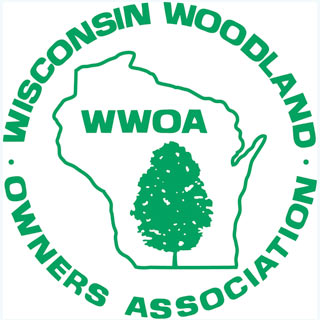News
White-Nose Syndrome Continues to Ravage Cave Bat Populations
Wisconsin bats continue to be hit hard by white-nose syndrome (WNS). All 60 survey sites visited by conservation biologists in winter 2018 showed signs of infection. A 99 percent decrease from historic averages at the first documented infection site; a 92 percent drop at sites in their fourth year of infection, and an 85 percent drop at sites in their third year of infection were documented.
Wisconsin First Detector Network
The Wisconsin First Detector Network (WIFDN) is a citizen science network that empowers people to take action against invasive species through invasive species monitoring, management, and outreach. WIFDN provides training and resources through a combination of webinars, instructional videos, and hands-on workshops, in addition to providing volunteer opportunities to citizen scientists. Click here to get to their website.
Keep An Eye Out for Palmer Amaranth, DATCP Cautions
MADISON – Farmers and land managers planting conservation seed mixes should be on the lookout for an aggressively invasive weed called Palmer amaranth, state plant protection officials say. In addition, anyone packing and labeling such seeds must take steps to avoid contaminating the mixes with Palmer amaranth.
Help Promote Your Local Chapter
Help us get the word out about the sustainable forestry community! We have a new poster available to help promote WWOA and the local chapters. Do you know a local business or hangout with a pubic bulletin board? Consider hanging up a poster in your community to let others know about WWOA. Some suggested locations include libraries, municipal buildings, grocery stores, implement dealers, and restaurants. The posters are printed in color on sturdy cardstock.
Oak Harvesting Guidelines During Unusually Cold Spring Weather
This year’s cool spring weather has caused people to wonder if the oak harvesting restrictions that usually begin on April 1 (south of the tension zone) or April 15 (north of the tension zone) might be pushed back due to unusually cold temperatures. The simple answer is no. Even during unusually cold springs, consistent messages about preventing the spread of oak wilt disease apply – “Stop pruning in April” and “Avoid harvesting in April (south of the tension zone)”.
Keep Wildlife Wild
As the weather warms and people spend more time outside, the frequency of human-wildlife encounters increases. A number of these encounters will no doubt involve young wild animals. Most such interactions are harmless. However, sometimes well-intentioned people interfere with young wildlife because they incorrectly assume a young animal is orphaned. Most wild mothers watch their young from a distance, and what you think is an abandoned young animal may be perfectly fine.
Create a Forest – A step-by-step guide to planting and maintaining trees
Creating a forest begins long before and continues long after you plant your trees. The guide will take you through the steps needed for the successful establishment of a woodlot, starting with developing a plan for the site through tree planting and maintenance of the stand. Click here for the publication.
EAB Quarantine Extended Across Entire State
MADISON – The entire state of Wisconsin will be placed under quarantine for emerald ash borer, the Wisconsin Department of Agriculture, Trade and Consumer Protection announced today. The quarantine will be effective Friday, March 30. Until now, quarantines have been imposed county by county, but now that EAB is in 48 of the state’s 72 counties, officials have decided a statewide quarantine is warranted. However, they still discourage moving firewood within the state.
Renewal Options for Expiring Conservation Stewardship Contracts
Agricultural producers wanting to enhance current conservation efforts are encouraged to renew their Conservation Stewardship Program (CSP) contract. Through CSP, USDA’s Natural Resources Conservation Service (NRCS) helps private landowners build their business while implementing conservation practices that help ensure the sustainability of their entire operation. Participants with existing CSP contracts expiring on Dec.
Learn About the Conservation Stewardship Program
The United States Department of Agriculture’s (USDA) Natural Resource Conservation Service (NRCS) works with landowners and farmers through their Conservation Stewardship Program (CSP) to help them plan and implement conservation practices and enhancements that address natural resource concerns on their property. The program covers an array of focuses from livestock, dairy, and crops to forestry, wildlife, and soil health. What does that exactly mean for you and your woodlands?
